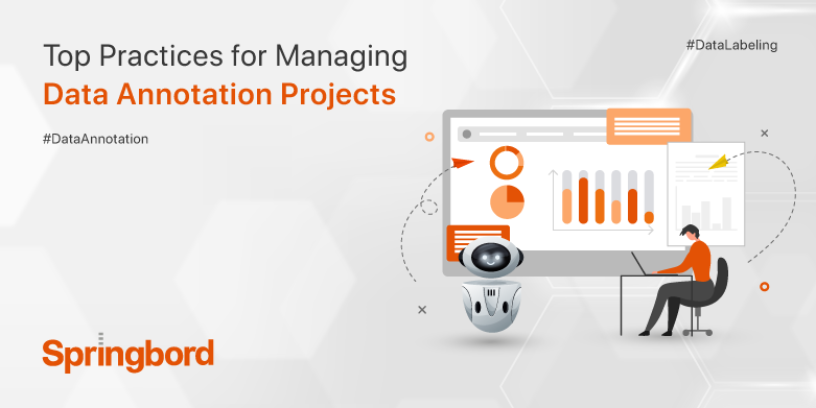 Read time 3 min
Read time 3 minPutting together useful training datasets requires a procedure known as “data annotation,” which entails classifying and labeling data. Training datasets are only useful if they have been properly organized and annotated for their intended purpose.
Annotating data may seem like a mindless, repetitive task that takes no planning or forethought. Annotators need only prepare and submit their data. But the facts contradict that. Data annotation may be a time-consuming and repetitive process, but it has never been simple, especially when it comes to managing annotation projects. The low quality of training data and ineffective management have contributed to the failure and cancellation of numerous AI projects.
Before encountering issues that may have been avoided with proper data annotation rules and best practices, many teams fail to recognize their significance. Whether you’re trying to analyze financial records, construct a fact-checking system, or automate another use case, you’ll need labeled data to solve a supervised machine learning problem.
It is challenging to train a model and achieve desirable results; even then, this is no guarantee of the model’s eventual success in the field. And it’s true: a good training dataset is crucial to successful machine learning. Your ML model will be doomed to fail if it is trained on a dataset full of corrupted or poor-quality data, if the dataset is imbalanced or biased, or if the labels are incorrect or inconsistent. Engineers working in ML face a wide variety of difficulties, particularly during the training period. These can be anything from:
- Data collection and development into a complete database;
- Project objectives and management structure are clearly defined;
- Training workers to maximize output and effectiveness;
- Implementing rigorous measures to ensure high-quality output.
There are typically six steps involved in an annotation project
Explain the annotation project
The first and most important stage is to determine exactly what it is you want to accomplish and how you plan to go about doing it. It will lay out the parameters for what data you need to collect, how you need to collect it, what kinds of annotations you’ll need, how you’ll put those annotations to use, and the time and money you’ll need to put into the project. One large annotation effort may not yield as high-quality results as several smaller ones, thus it’s best to prioritize the latter.
Structure your data
Put together a dataset with as much variety as feasible. For your model to be free of bias and to account for all edge cases, the diversity of your data is more crucial than quantity. Make sure that your dataset covers persons dressed differently crossing the street in different weather and lighting conditions as an illustration.
Make a workforce choice
Data annotation initiatives of any kind necessitate the use of a human labor force. However, humans cannot label every sort of annotation project successfully. Labeling brain scans is a medical specialty and cannot be outsourced to just anyone. Figure out how many people will be needed for the project based on the information you have collected so far. For more niche needs, it may be necessary to bring in subject matter experts. SMEs can sometimes be found within your own company. Occasionally, you’ll need the help of a manpower provider.
Choose and use an annotation tool for your data
Today, a wide variety of annotation tools are readily accessible. The protection of employee information and its easy availability are two of the first things to think about when searching for one. The next step is to ensure it can be smoothly implemented into your current system. Finally, make sure it has the appropriate UX/UI interface and features to cater to your specific annotation and project management requirements.
Set broad parameters, and give constant feedback
Your project’s success or failure will depend on the quality of its execution. According to our calculations, the model’s accuracy drops by between 2 and 5 percentage points for every 10 percentage point drop in label accuracy. Achieving the best possible standard requires establishing and disseminating unambiguous norms to employees. It is likely that as the project develops, these rules will need to be revised and disseminated. Employees should be encouraged to voice concerns and offer suggestions through established methods.
Implement a robust system of quality control
Decide on a quality metric early on in the project; for example, the consensus or the honeypot. Filtering assets (pictures, words) where labelers dispute allows you to pick the correct label and add those edge/difficult cases to the rules. We discovered that it is preferable to annotate fewer data points with consensus than a larger set of data points with no agreement.
Conclusion
Organizations can use Springbord’s Labeling Functions to annotate high-quality labeled training data, allowing for quick development and adaptation of AI applications via programmatic iteration on labeled data.






